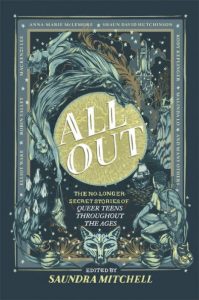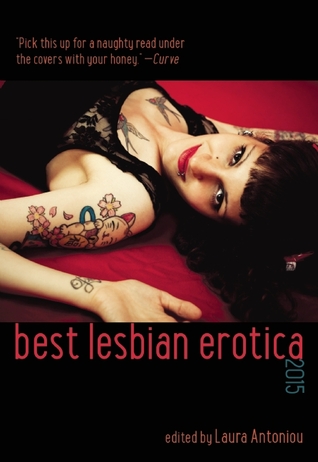I’ve been really lucky in my reading material these past few years. The blossoming of affordable queer lit on the indie book scene as eBooks and social media marketing transform how we find each other has validated my adolescent needs in the best of ways. However, once you’re finally fed, and your needs met, that’s when you notice that some of your more specific preferences are still eluding you.
That’s me with queer costume drama. Basically, thanks to a childhood drenched in the glorious excesses of operatic theater, I long for our presence in 17th and 18th century adventures. I want big skirts and glitter and palaces. But for some reason, probably thanks to Austen, Regency romance (early 19th century) completely dominates the world of historical/costume drama fiction whether the main characters be queer or not.
Frankly, I didn’t think I’d ever get my Baroque romance.
But then Robin Talley’s story, “The Dresser and the Chambermaid”, in the recently released queer YA historical anthology All Out, satisfied all my most specific, most picky, most “can I get this with a salad instead of fries?” needs all at once. I am so happy with this story, even though it’s only a short story. Let me number the reasons.
1. It takes place in the early 1700’s. As I said, we never get to play in this sandbox in our romantic reading, usually. Or any other reading, for that matter! I’ve searched on Goodreads and with few exceptions (like Escape to Pirate Island, another f/f fave rec of mine) the books set during this era tend to be about people coping with the current political situation instead of the chiefly personal ordeals that comprise much of escapist weekend reading.
This story, however, is not about that. This story is a Baroque-set story that yet manages to be about people dealing with their own lives, and not European royalty bashing each other over the heads with ideological and economic bludgeons. You know, like the eight hundred and fifty trillion Regencies! (Don’t get me wrong. I enjoy the hell out of them and can rec a couple. BUT STILL.)
So what does that mean for the reader? It means you get: Baroque excess in terms of setting (glittering palaces, ballrooms filled with huge dresses you have to walk through the door sideways in, frou-frou wigs). This pleases me.
2. It stars working-class women! Yes, I know: a historical romance where BOTH leads work for a living? Amazing. Which means they are totally relatable even in this day and age, and plus, we should be supporting reading about regular people in general. Obviously I love a good princess, and this story has other cool royalty moments, too, but I like supporting this as well. It fits my values.
3. A historical romance between two women where the fact that they’re both women IS NOT PART OF THE PLOT CONFLICT AT ALL. For me, this is glorious. The plot conflict instead of is the bumpy road to better employment, and the possibility of professional jealousy. Now, it’s not set in some kind of alternate reality where Baroque England was magically Hip and With It. They’re just playing it secret and subdued like they would have if they were real. As do the other gay characters in the story, because:
4. The two leading ladies aren’t the only queer rep! There’s a gay man who’s one of the servants and he has a crush on one of the upperclass dudes, but that particular upper class dude is dating another upper class dude, and the little lesbian servant commiserates with him about it and it’s just so adorable and real and reminds me of the wlw row at my temple (yes, we have a row) and the way we all interact.
If I haven’t sold you yet, let me add that:
5. There is a ton of other f/f rep in this book from all over history and I enjoyed most of it. Dahlia Adler’s story “Molly’s Lips” is set just after Kurt Cobain died, and the girls are supporting each other through it. There is also ANOTHER Baroque-era story, this one set in colonial America involving two teenage girls who run away from their respective marriages (to dudes) to become lesbian pirates. I also loved the jazz-age one about the child actress who’s grownup now and not a movie star anymore, who meets a waitress who’s still star-struck by her even though she’s no longer a household name. And there’s great trans m/f rep as well but I’m not going to discuss that in this review for obvious reasons; I will eventually review the whole book though so stay tuned if you follow me on social media.
So: thank you, Robin Talley. I’m so glad this one little short story is a thing. To other writers: if you’re planning something like this, please keep me on your radar and let me know once it’s out!
Note to readers: because it’s from a major publisher, All Out is more likely to actually already be at your local library than some of the indie lit we usually discuss here. I am so happy for those of you who benefit from this because of parents or money that usually keep you from queer lit with happy endings.
Shira Glassman’s latest release, Cinnamon Blade: Knife in Shining Armor, is a high-heat f/f romance between a superheroine and the damsel-in-distress she keeps rescuing. She has written one Baroque romance of her own, “Gifts of Spring” in Queerly Loving Vol. 1, but it’s m/f starring a trans woman mage and a Jewish acrobat, not f/f, so be aware if you read exclusively f/f.



